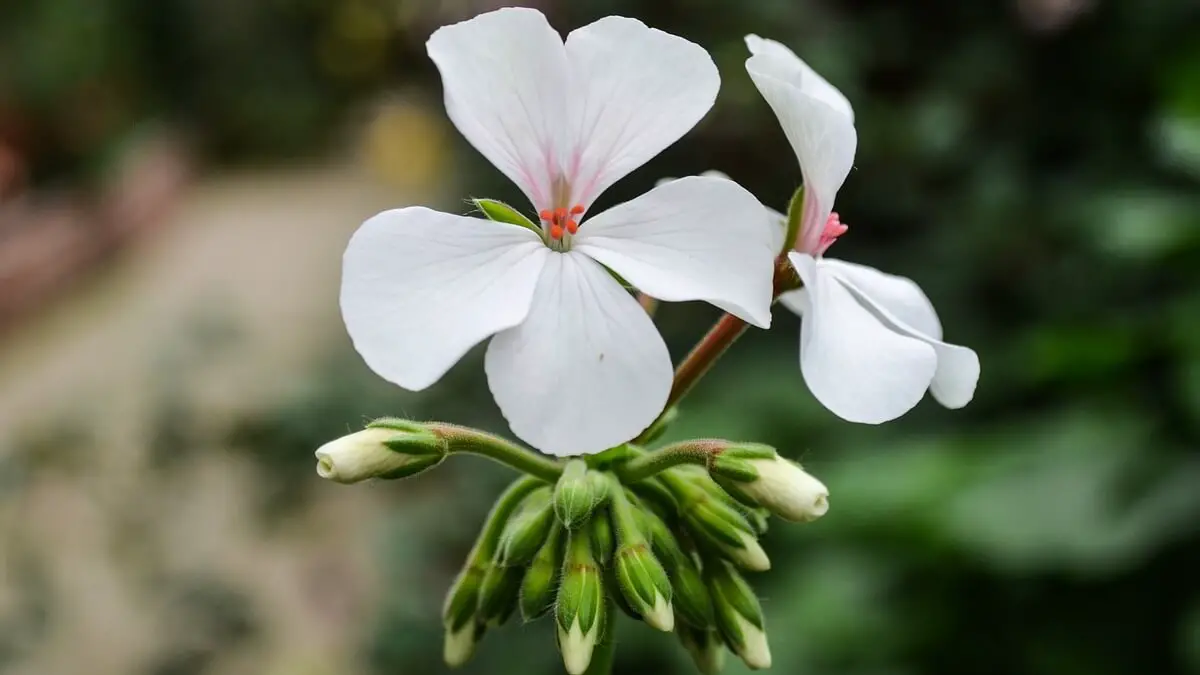How to Grow Ivy Geranium Plants
Ivy geranium (Pelargonium peltatum) is a perennial scrambling plant belonging to the cranesbill family. It has various names including cascading geranium and ivy-leaved pelargonium.
Ivy geranium, in general, is indigenous to eastern and southern parts of South Africa. In these regions, It flowers throughout the year but more prolific mostly between august – October.
This article focuses on ivy geranium, its description, propagation methods, caring, and uses.
In 1704, the traders of England and Holland introduced these plants in their respective markets. These plants are winter hardy in USDA Zones 9 – 11 only. So, the European consumers grow them as annuals.
With their vivid colors and fast-growing habits, these cascading plants are known to be the queen of hanging baskets (Gardens)
With their creeping, trailing, and climbing growth habits, they fit perfectly for window boxes, planters, Mediterranean gardens, borders, and beds. In warm regions, you can even use them as ground covers.
Table of Contents
Description

Generally, the slender, succulent, and smooth stems of this plant grow about 7 feet (2 m) in length. The thickness of these stems is about 0.12 – 0.40 inches (3 – 10 mm).
Along the stems, the leaves sprout alternatively, but sometimes opposite to each other. The leaves also have stipules that measure about 0.28 inches (7 mm) long and 0.16 inches (4 mm) wide.
Measuring about 0.2 – 2.2 inches (0.5 – 5.5 cm) long, the leaf stalks sometimes appear with fine hairs. The five tipped lobes of the leaf blades spread radially with a margin, from a central point.
Having beautiful variegated foliage, some varieties bloom in various colors including white, pink, red, purple, orange, burgundy, apricot, and lavender. Usually, the flowers develop in umbel-shaped clusters (inflorescence). Compared to zonal varieties, these clusters are denser.
The Greek word “Pelargonium” resembles stork birds. The fruits of these plants appear like a stork’s beak. The fruits of their cousin plants like cranesbill geranium and garden geranium also have a similar appearance.
Ivy Geranium Plants – Varieties and Growing Habits
Depending on growth habits and characteristics, there are more than 75 varieties of ivy geranium cultivars available commercially.
Clinically, some varieties are developed to thrive in hot weather. Some varieties do not require deadheading (self-cleaning varieties) at all.
We have explained four major ivy geranium types below:
Traditional Varieties
These varieties have fleshy leaves. They usually sprout semi-double or large- double showy flowers. Compare to cascade varieties, traditional varieties bloom less abundant flowers.
Cascade Varieties
Generally, Cascade (Balcony) cultivars have a compact appearance compared to traditional cultivars. Most of these cultivars have variegated foliage. some cultivar types have small green leaves also. Cascade varieties sprout prolific beautiful single blooms.
Dwarf Varieties
These are miniature of true dwarf varieties of cascade type cultivars. You can simply call them mini cascades. Compared to cascades, these varieties grow more compactly and tightly. Comparatively, they also sprout less abundant flowers that are slightly smaller in size.
Ivy- Zonal Hybrid Varieties
Comparatively, Zonal geraniums have more rounded, larger leaves. Some of their types even have dark bands on the leaves, enhancing their ornamental characteristics. Since Zonal geraniums are sterile, they bloom abundantly.
When combined with ivies’ vining habits, they can provide a more spectacular ornamental look. These rare Zonal Hybrid combination varieties are developed clinically for commercial floral markets.
These cultivars usually sprout semi-double flowers. In most cases, they bloom numerically similar flowers to zonal and traditional cultivars.
Propagation of Ivy Geranium Plants

Light
For best flower and leaf colors, full sun is preferable. In hot summer regions, these plants can thrive in partial shades also. However, they need at least six hours of sunlight for colorful ample blooming.
Soil
Ivy geranium plants prefer to grow in sandy loam or loam soils. It is because these types of soils have better drainage. They also provide enough root aeration that these plants prefer.
Water
Water these plants regularly at surface levels. To prevent soggy conditions, allow the soil to be a little bit dry in-between the watering schedule.
Temperature and Humidity
These plants can thrive in moderately hot temperatures and low humid conditions. As the temperature rises, the blooming slows down and stops completely. Also, the new leaves turn pale or even white.
High humid environments attract various fungal diseases in plants including ivy geraniums.
Fertilizer
Enrich the soil with a slow-release fertilizer before planting. This will feed the plants for almost the entire growing season.
The seeds and stem cuttings are major propagation methods for ivy geraniums.
From Seeds
Normally, this is a slow propagation method. Start this process indoors at the beginning of the year (January). The whole process may take approximately 3 – 4 months from sowing seeds to yielding (blooming).
1.) In the half portion surface of damp paper towels, spread the seeds evenly in a single layer. Then, fold the other half portion of paper towels on them.
2.) To retain the moisture, place this arrangement in a zip-top bag and seal it. you can expect germination in a couple of days.
3.) Fill a planting tray with a light starter soil mix.
4.) Sow the germinated seeds at least 1 /4 inch deep in the planting tray.
5.) Using good quality spray bottles, mist the soil surface with water. By misting regularly, maintain the soil moisture but do not allow it to be soggy.
6.) Place the tray in a spot that gets plenty of sunlight and steady temperatures (about 60-degree Fahrenheit). You can also make use of artificial lights and room heaters.
7.) After the plants grow 3-5 inches tall, transplant them in outer gardens or larger containers.
From Stem Cuttings
This is an easy and successful propagation method. You can start this process in late autumn or early winter, just before the frosts.
1.) From a mature and healthy plant, cut 4 – 5-inch-long cuttings just above a leaf set. Make sure to use good quality garden shears to perform the job.
2.) Remove all buds, blooms, and foliage from the cuttings, leaving the top 2- 3 set of leaves.
3.) For a couple of hours, place the cuttings in a spot that does not receive direct sunlight. This facilitates the cut ends to form a callus.
4.) Fill a small planting pot with potting soil and water it. Make sure the soil is wet but do not allow it to be soggy by overwatering.
5.) Now, dip the bottom end of the cuttings in the water and then in a powdered rooting hormone. After that, dust the bottom ends by gently tapping to remove excess hormone coatings.
6.) Plant the cuttings at least 1- 3 inches deep in the potting soil. Keep this arrangement in a location that receives indirect sunlight.
7.) water regularly to maintain the soil moisture. But, avoid overwatering.
8.) In about 2 – 3 weeks times, the cuttings will root naturally.
After that, you can place the cuttings in sunny locations and transplant them in gardens or permanent pots after the frost.
Caring of Ivy Geranium Plants
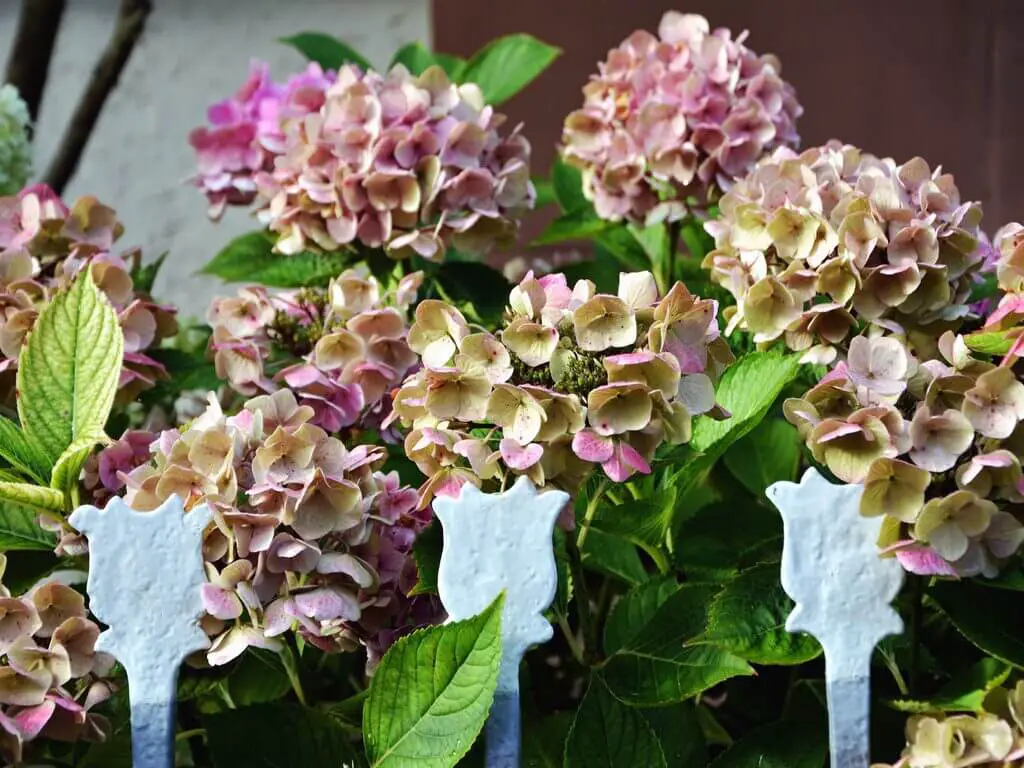
In their native lands (South Africa), the ivy geranium plants grow in sheltered spaces. These spaces mostly receive moderate light and heat (temperature).
This simply means, in most North American lands, these plants may require full sunlight. But in hot areas, a little bit of afternoon shade is essential.
In modern days, you can easily find some heat-tolerant varieties like Alpine or Cascade series in commercial markets.
For best flowering yields, maintain these plants considering the below-mentioned information.
1.) While propagating, select a space that receives full sunlight, if the temperature in your area remains lower than 80°F for the most part. Otherwise, you can select spaces that receive a little bit of afternoon shade.
2.) If your selected location has moderately fertile soil, amend it with organic materials like worm castings, well-rotted manure, or bone meal mixed mature compost Etc., before planting.
3.) Make sure the planting space has well-draining facilities.
4.) After planting, maintain the soil moisture by watering regularly. Avoid overwatering so as to cause waterlogging. Water at surface levels in the morning times. This gives time to plants for drying themselves in the day time.
5.) Feed the plants with slow-release fertilizers (NPK 10-10-10) regularly.
6.) Even though most modern varieties are self-cleaning, deadheading encourages fresh blooms naturally.
Pruning
When these plants start to grow leggy, prune them by about half. This will encourage bushy, dense growth, and new blooms. Mostly, the plants in frost-free areas grow woody by age. Pruning them every spring by half. This rejuvenates them with fresh energy and encourages new growth.
Winter Caring of Ivy Geranium Plants
Unlike conventional geraniums, the regrowth of ivy geranium plants during the next year cycle cannot be guaranteed. However, we have elaborated some steps below to maximize the probability.
1.) Shift the container-grown plants indoors before the frost.
2.) Prune them about 2 /3 of their original growth.
3.) Water them just once a month. Since they go dormant, this watering frequency is more than enough.
4.) As the spring nears, you can see the plants sprouting slowly. At this stage, feed the plants with diluted (1 / 3 strength) balanced liquid fertilizer (NPK 10-10-10)
When the warm weather arrives in the mid-spring, replace them in their original locations outside.
Pests and Diseases
In most cases, ivy geranium plants are free from pests and diseases. Still, there are a few common issues to look out for.
Pests
Aphids
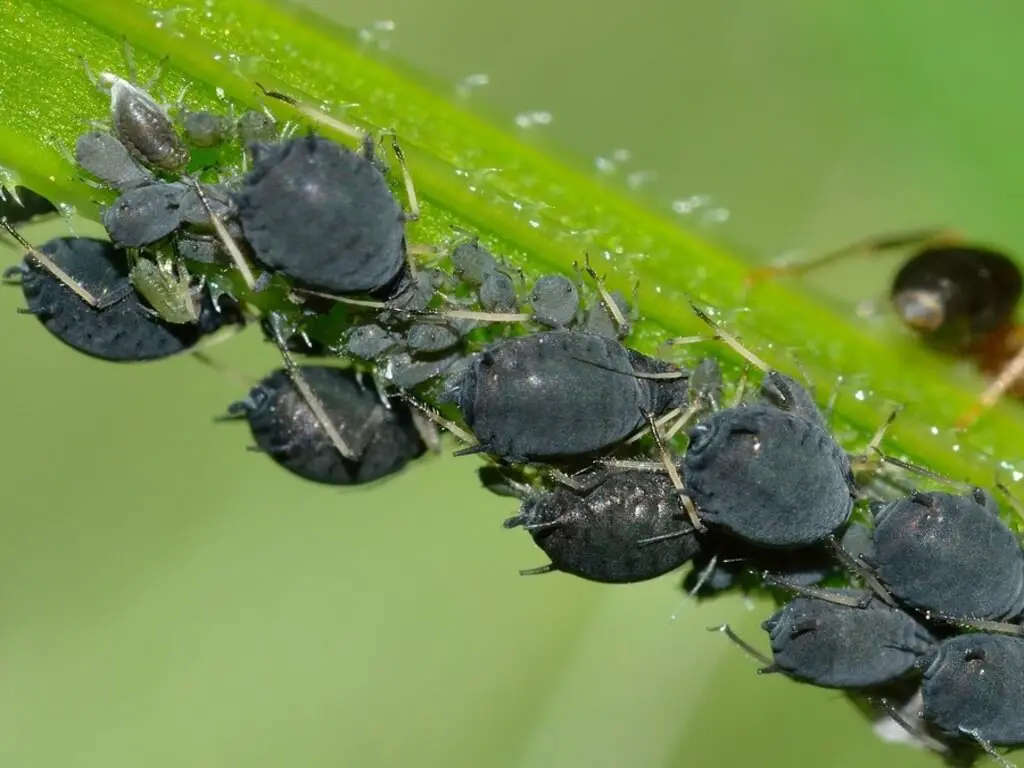
Generally, Aphids have soft bodies and appear in different colors including yellow, green, and black. Using their piercing and sucking mouthparts, they suck the sap out of plants. This may lead to stunt growth, development of plant galls, the transmission of viral diseases, and deformation of foliage.
You can wash them out using a strong blaze of hose water. If the infections still persist, use aphid sprays or neem oil sprays to treat them.
Whiteflies
In fact, the whiteflies are not real flies. They are closely related to mealybugs, aphids, and scales. These types of insects group together on the underside of the foliage. They use to be fiercely active in warm temperatures during the daytime. They suck out the sap from the plants. This may lead to deformation, stunt growth, viral disease transmission, etc.,
Using a strong blaze of jet or hose water, just wash them off. You can also introduce natural predators like whitefly predators, ladybugs, spiders, green lacewings, pirate bugs, etc., If the problem persists, treat them with insecticidal soap solutions.
Diseases
Bacterial Blight
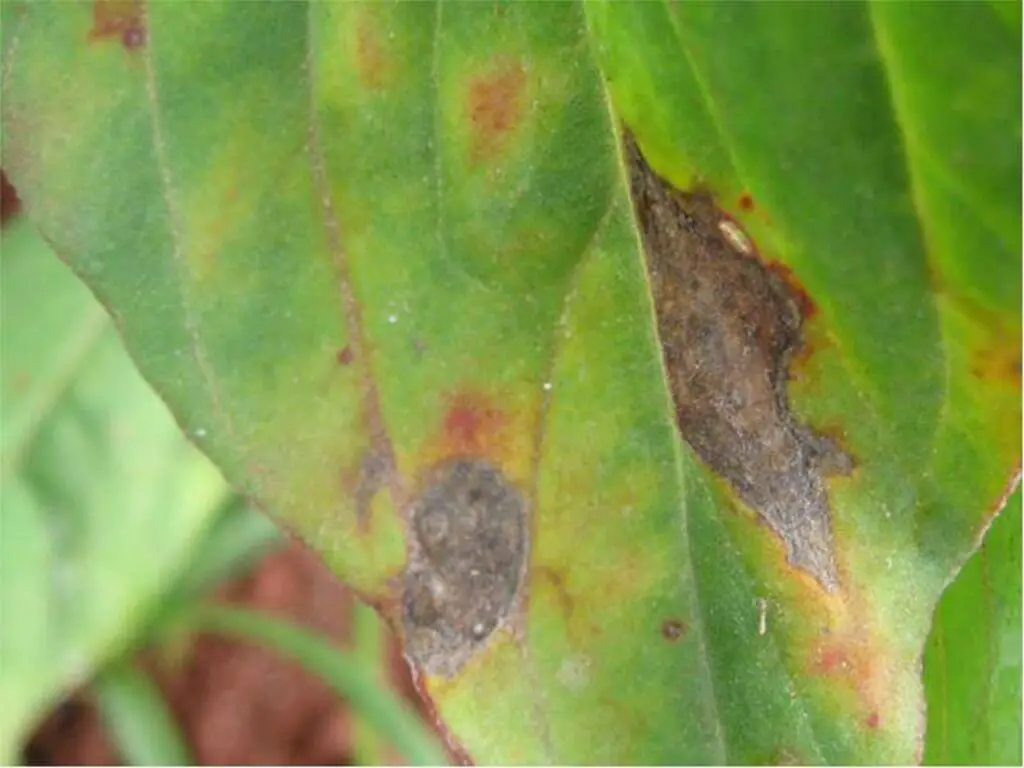
Photo by Suneerat Seemaduai, Department of Agriculture, Thailand (CC BY 3.0 AU)
Bacterial blight causes severe decolorization, withering, and dying of foliage or even the entire plant. Through the petioles and veins of the foliage, this bacterium enters the plant’s vascular system. As a result, the infected parts or even the entire plant may die as a whole. Most commonly, this disease infects the plants in cold and moist environments.
Dispose of the infected plants immediately to prevent further spreading of the disease. Facilitate plenty of air circulation around the plants. Follow good sanitization practices. Particularly, sterilize the tools every time before using them.
Botrytis Blight (Gray mold)
Botrytis Blight infects plants in cool and damp environments. In most cases, this disease infects the blossoms of the plants first. With a water-soaked appearance, the infected blooms turn brown initially. Then, the grey fungus spores cover them entirely. Finally, the infected blooms fall prematurely.
The foliage, in contact with infected blooms, develop lesions and leaf spots. In this way, the disease may spread to the whole plant. Upon severe infections, the infected plant may die.
Serenade fungicide treatment is one of the most effective ways to deal with Botrytis Blight. However, if the disease persists, destroy the infected plants and dispose of the debris.
Uses of Ivy Geranium Plants
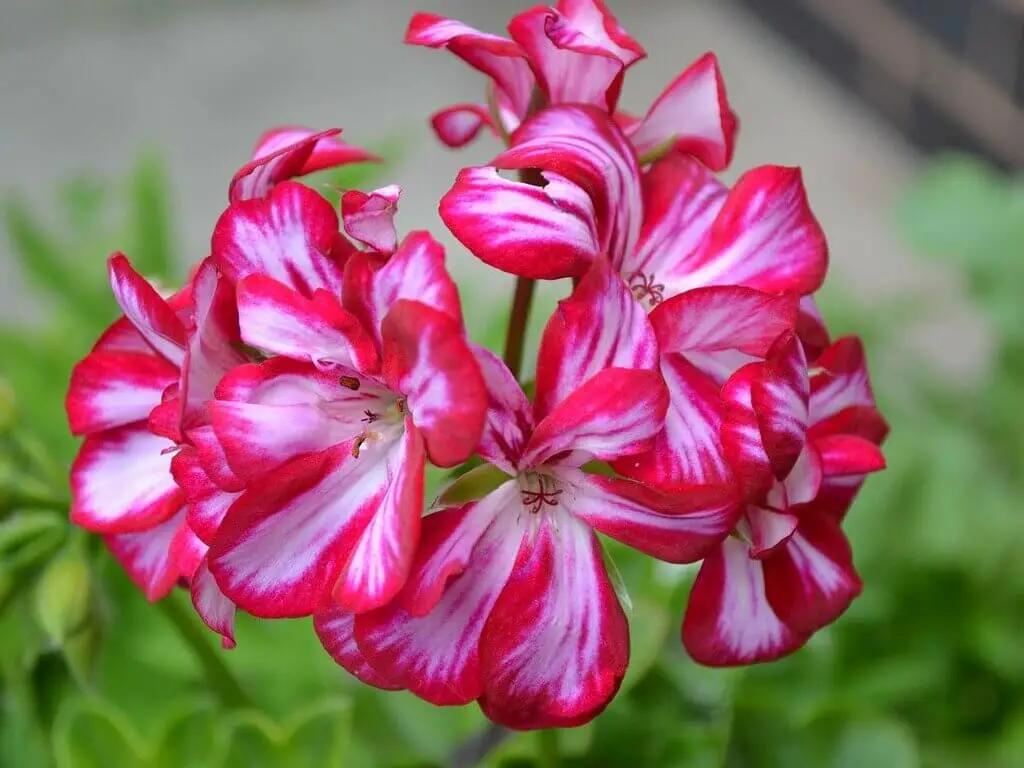
Medicinal uses
In traditional medicines, the ivy geranium plants’ sap is used to treat sore throats. For wounds, scratches, minor burns, grazes Etc., some traditional medical practitioners recommend applying crushed ivy leaf paste.
Consumer Industry
Being astringent, the floral petals can serve effectively in liquid washes, formulated for greasy skins. The consumer industries use these petals to produce wash liquids, dyes for paints and wool Etc., The scented geraniums are used for preparing scents and flavoring products.
Ornamental usage
Compare to traditional varieties, ivy geranium types are less common in general.
Particularly in large pot arrangements and garden boxes, very few plants can serve beautifully as these magnificent ivy geranium plants do.
You can hang them in ramps, rung along the pathways, cascade down in hanging pots, place them near windowsills or just grow them in gardens. To match every taste, these plants are available in a wide array of shapes and colors.
With just minimal caring, they can bloom for the most part of summer. They can decorate your gardens and indoors beautifully as very few plants could do!
Similar Plants
How to Grow Cold Hardy Rosemary in Gardens
How to Grow Asparagus Fern in Garden Spaces

